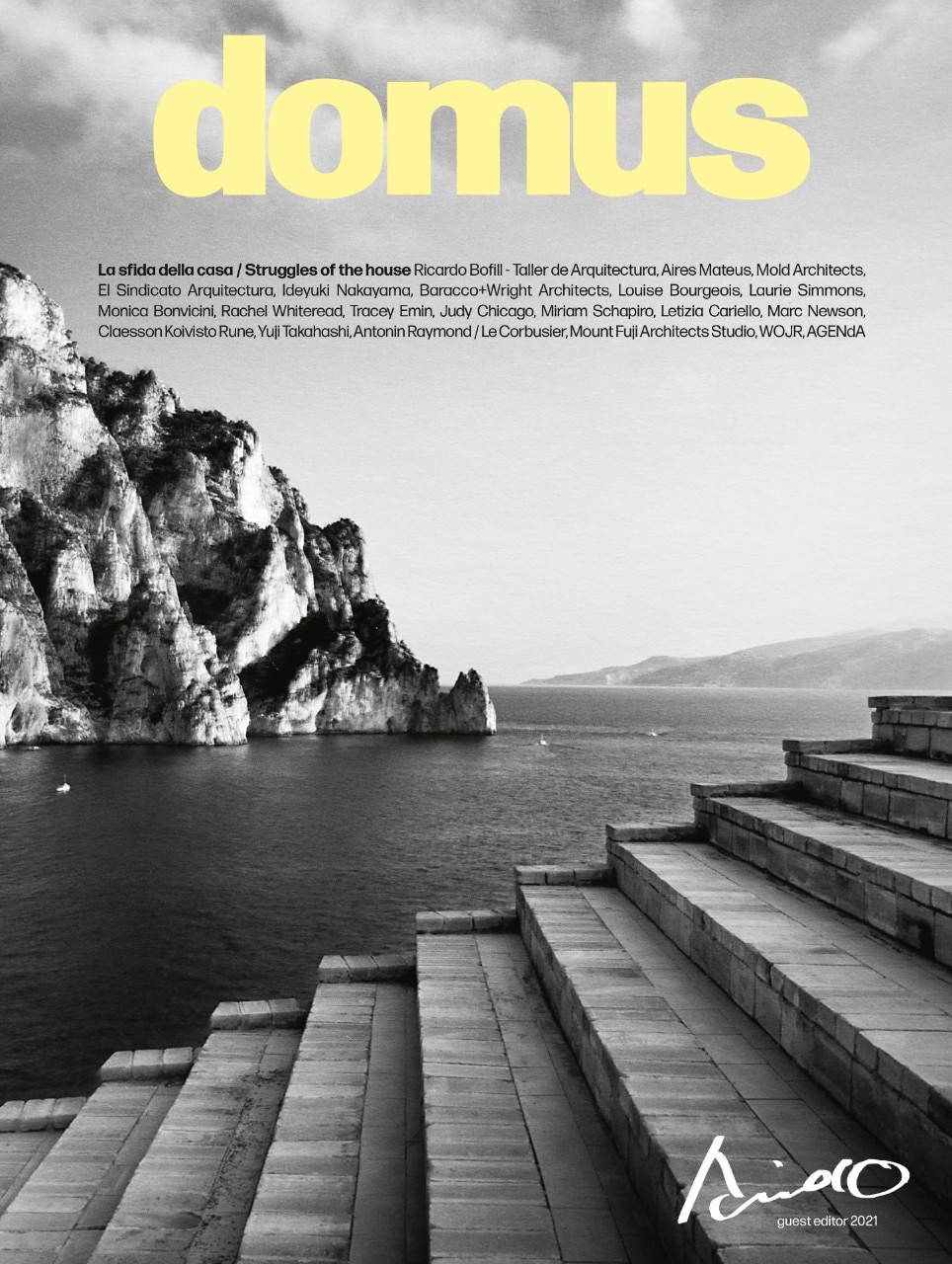The March issue of Domus 1055 focuses on the role of the house, the basic unit of architectural practice. In his editorial, Guest Editor Tadao Ando describes it this way: “The house lies at the origin of architecture – a manifestation of ambivalent human imagination between the abstract and the concrete. It is a microcosm emerging in the private realm, a “fortress of resistance” capable of reclaiming a habitat free from capitalism’s arbitrary and commercial values.”
Follows an essay by Christian Dehli and Andrea Grolimund, who describe Kazuo Shinohara’s 1974 Prism House, a purist, minimalist space that inspired Smiljan Radic for one of his recent projects. The American Art historian Philip Jodidio divides the theme of private housing into four categories: ecology, broadening horizons, flexibility, modern variations.
In the Architecture section, six projects are presented, characterised by three different challenges on the context. For Challenging time, Juli Capella illustrates La Fábrica by Ricardo Bofill, a place obtained from a former cement factory that, since 1973, continues to transform and adapt to the life they contain, protecting and stimulating it. The constructions, on the other hand, gathered under the name Challenging site are the Casa a Melides I by Aires Mateus, which features brick as the only construction material, the NCaved residence by Mold Architects, and the Casa Parásito by El Sindicato Arquitectura, a prototype for a housing unit placed on the roof of a pre-existing building. Finally, under Challenging lifestyle is described Curves and chords house by Hideyuki Nakayama Architecture and Garden House by Baracco+Wright Architects, an experimental dwelling intended for occasional occupancy.
In the pages dedicated to Art, Caroline Corbetta outlines a lucid analysis of the domestic territory, which has always been a neuralgic space in the process of deconstructing gender stereotypes. “For centuries houses were designed and built by men. Women lived in them, spending innumerable hours within the walls of these buildings, which provided shelter but also proved to be prisons.”
Within the Design section are illustrated two collections by Marc Newson, Cloisonné and Cast Glass series, born as jewels, then expanded to the scale of the human body, blurring the boundaries between sculpture, design and decorative arts. Furthermore, the Hand series of wooden furniture is the result of a collaboration between Claesson Koivisto Rune and Japanese craftsman Yuji Takahashi, and acquires value when it is used because it is made entirely by hand.
The new Creators section illustrates various thought-forms that can emerge around an idea. Each month we will offer a series of artists and designers who shape objects, spaces, and buildings a chance to express themselves visually on the topic we investigate in the issue. For this issue, we asked designers such as Tatiana Bilbao, Dominique Perrault, Thom Mayne, John Pawson, Virgil Abloh, and others to focus on the question “What is the house?”
In the column Design snippets, Kenneth Frampton discusses the relationship between Raymond’s residence in Karuizawa, Japan, and Le Corbusier’s never-built Maison Errazuriz, designed for a site on the shores of the Pacific in Chile. Mount Fuji Architects Studio report on constructing the Peninsula House in Kanto, Japan, an imposing sculptural and functional element. Finally, for WOJR Studio, the size and weight of two enormous marble support determined the House of Horns site’s logistics and organisation in Los Altos, California.
In this month’s Diary, pages dedicated to current events, a round table between Marco Armellino, Paolo Cresci, Signe Kongebro and Davide Malberti features themes of sustainability and circular economy, increasingly substantial resources and challenges for planners, architects and design entrepreneurs. Carlos D’Ercole visits Albert Watson’s Tribeca home, overlooking the Woolworth and the Empire State Building, where the photographer has lived since 2009 and where his passion for Japanese prints from the late 19th century mixes with that for design. Valentina Petrucci tells us about Italian fashion designer Giorgio Armani. Silvana Annicchiarico analyzes the expressionist design of OrtaMiklos, between performance and a mix of cultures. Editorial director Walter Mariotti concludes the section with the history and background of Casa Malaparte, the iconic twentieth-century villa, cover of this issue, which represents the culmination of a life and the synthesis of thought: those of the famous Italian writer.

The design of well-being according to Caimi
Two new products ensure the highest level of environmental well-being through acoustic insulation.

























